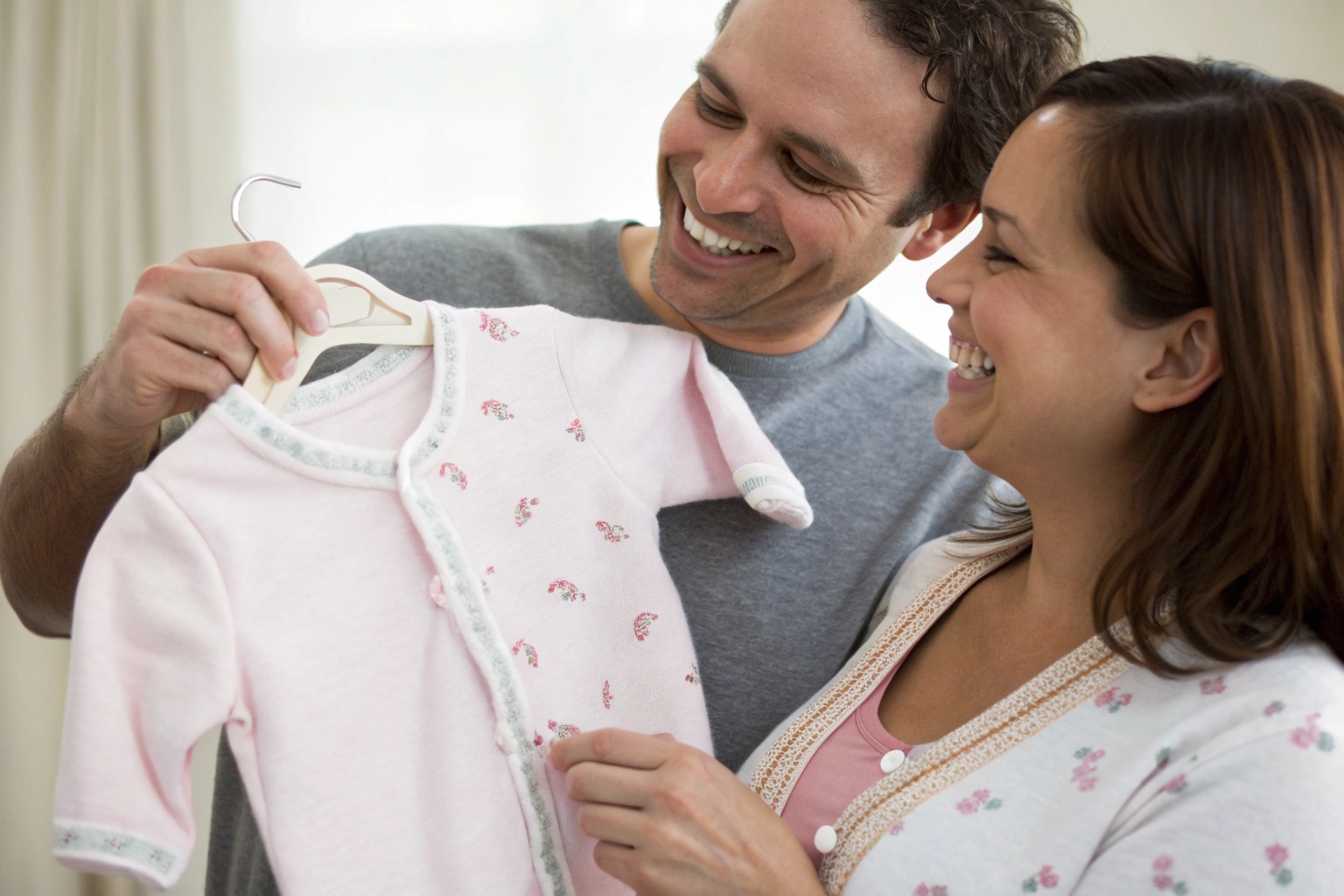In a crowded babywear market, standing out isn’t just about price or speed—it’s about offering something unique that connects emotionally with parents.
Custom baby clothes help brands stand out by combining personal meaning with brand identity, increasing loyalty, and creating one-of-a-kind buying experiences.
Here’s how personalized and custom babywear is becoming the secret weapon for modern baby brands—and how to make it work for your business.
Why Personalization Boosts Brand Loyalty in Babywear?
Today’s parents want more than just clothing—they want connection, memory, and story. Personalized items give them exactly that.
Personalized babywear builds brand loyalty by turning simple outfits into emotional experiences, driving repeat purchases and word-of-mouth growth.
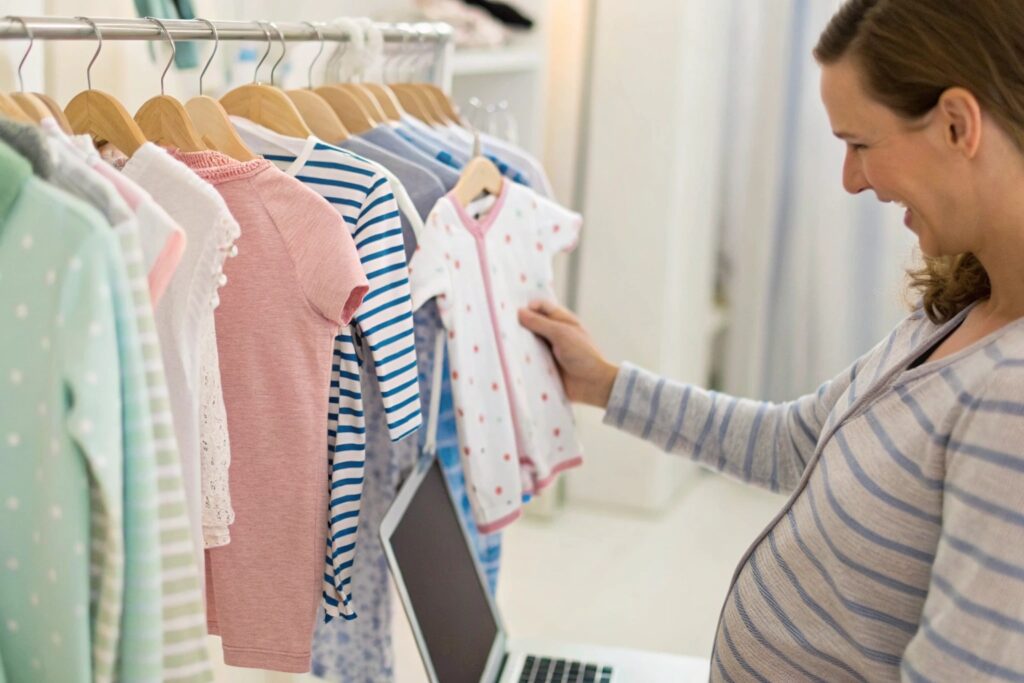
Why do parents return to brands that offer personalization?
Because custom touches make every item feel meaningful. Whether it’s a name, birthdate, or milestone phrase, parents feel like they’re buying for their child—not just any baby.
Personalized clothing becomes:
- A keepsake for memory boxes
- A go-to gift for baby showers
- A visual highlight in family photos
- A “special” item that other brands don’t offer
This deepens emotional connection. When a brand offers the option to personalize, parents associate it with care, creativity, and uniqueness.
What happens after personalization?
- Higher repeat purchase rate: Parents come back for new sizes or siblings
- More social media sharing: “Look what I got from [brand name]!”
- Increased AOV: Personalized items often add $5–$15 to each sale
When customers feel involved in the product creation, they’re more invested in the brand behind it.
How Custom Designs Set Your Babywear Apart?
Trends come and go—but originality makes a brand unforgettable. Custom babywear helps you break away from generic looks and define your signature style.
Custom babywear designs let brands control colors, shapes, fabrics, and prints—making every piece on-brand and instantly recognizable.
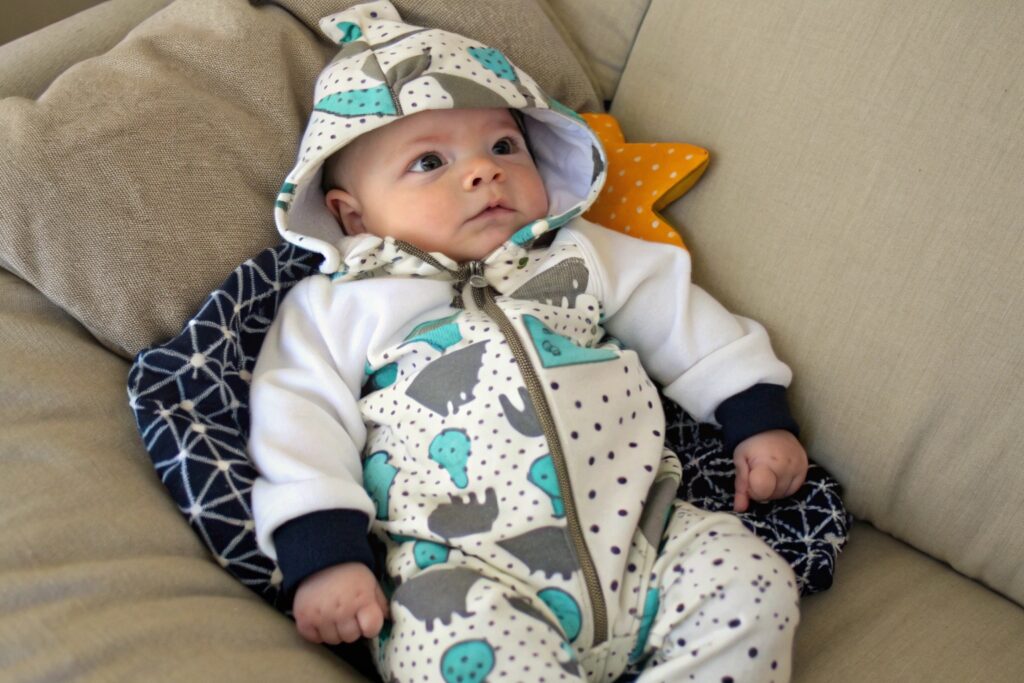
How does custom design differ from stock production?
Most factories offer “ready-made” bodysuits or rompers. Anyone can buy them and print a logo. But with custom design, you create from scratch:
- Fabric type
- Sewing pattern
- Collar, cuff, and snap details
- Custom prints and colorways
- Packaging and labels
This ensures your babywear line looks and feels like no one else’s.
Here’s a side-by-side:
| Feature | Stock Garment | Custom Design |
|---|---|---|
| Fabric | Supplier-chosen (basic cotton) | Brand-specified (organic blend) |
| Print or color | Limited to options available | Pantone-matched or original print |
| Branding elements | Logo on generic garment | Full-label system + woven tags |
| Fit and silhouette | Common shape | Designed to match your audience |
Why does this matter for babywear brands?
Because visual branding matters. A custom-fit ribbed sleeper in your signature color builds brand memory—and gets parents to recognize your product on shelves, online, or in social posts.
Best-Selling Ideas for Customized Infant Clothing?
Not every item needs personalization. But the right pieces, paired with the right designs, sell faster, get gifted more, and feel more special.
The most successful custom babywear items are soft basics with space for names, dates, symbols, or seasonal prints that connect with parents emotionally.
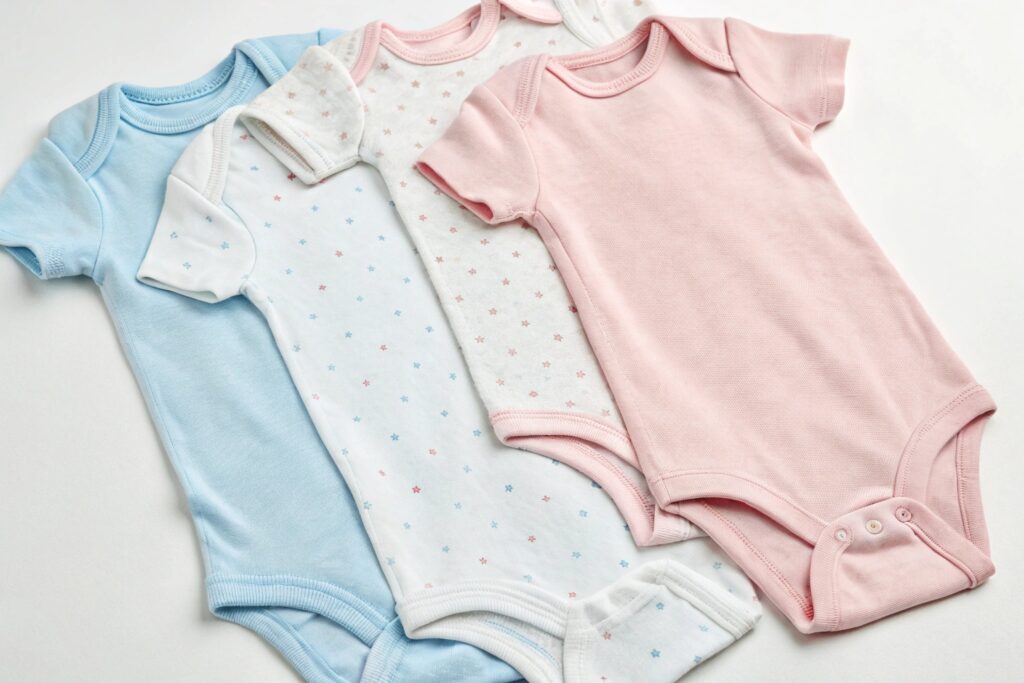
What types of customized babywear sell best?
| Product Type | Personalization Idea | Why It Sells |
|---|---|---|
| Bodysuits & onesies | Baby’s name + icon | Everyday wear + keepsake appeal |
| Newborn coming-home sets | Birth date + initials | Memorable gift + milestone use |
| Matching family tees | “Mommy of [name]” | Instagram-ready and giftable |
| Bibs and hats | Name embroidery | Small add-on, easy gift |
| Holiday-themed rompers | “Baby’s First Christmas” | Seasonal urgency, emotional value |
| Monthly milestone sets | Numbers + custom name | Keeps parents engaged every month |
Pro tip:
Offer preset templates with easy text swaps—like:
- “Welcome Baby [Name]”
- “Hello, I’m New Here”
- “Born in [Year]”
Use soft fonts, neutral tones, and minimal artwork for modern appeal. Give a preview of the design before checkout for increased conversions.
How to Work with Manufacturers on Custom Orders?
To bring custom babywear to life, you’ll need a manufacturer that understands branding, supports low MOQ, and communicates clearly on custom specs.
Working with the right factory means providing tech packs, fabric specs, branding files, and managing the production timeline carefully.
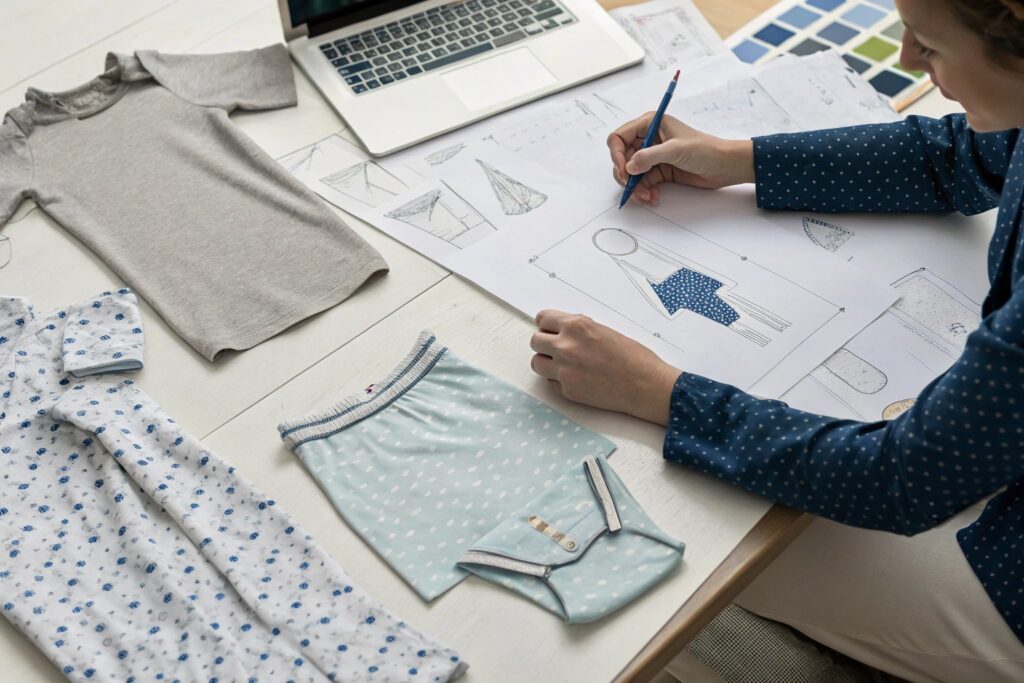
What do I need to prepare for custom orders?
Before contacting a factory, have:
- Product sketches or mockups (front, back, details)
- Tech pack: Sizes, stitching, trims, placement
- Fabric requirements: Weight, content, certifications (e.g. OEKO-TEX)
- Print/embroidery file: High-res PNG or vector
- Packaging and labeling: Hang tags, woven labels, stickers
Use this sample intro message:
Hello, we are a babywear brand launching a custom collection.
We want to produce 3 styles:
– Custom-print onesie (organic cotton, 180gsm)
– Embroidered hat (with baby’s name)
– Matching pants (rib cuff + waistband)Please confirm:
– Minimum order quantity per size/color
– Sampling fee and lead time
– Custom printing and embroidery options
– Packaging customization
How to avoid mistakes in custom production?
- Approve pre-production samples before bulk
- Use visual order sheets for embroidery/print names
- Set up digital mockups for buyer preview
- Add order review steps before sending to the factory
Consistency in size, fabric softness, and personalization accuracy are key. Don’t rush custom—manage it with structure.
Conclusion
Custom babywear does more than look good—it builds emotion, loyalty, and brand identity. With thoughtful designs, creative personalization, and a trusted factory partner, your brand can stand out in a crowded babywear market—and stay in parents’ hearts.

